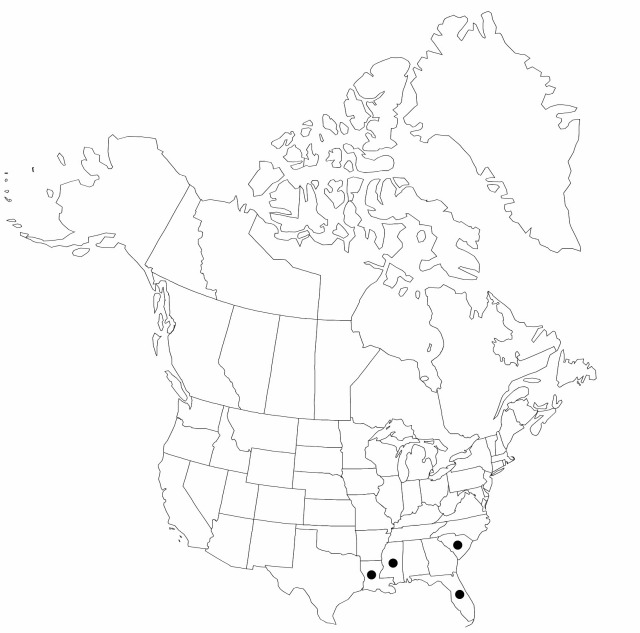Difference between revisions of "Cyperus pilosus"
Enum. Pl. 2: 354. 1805.
FNA>Volume Importer |
FNA>Volume Importer |
Revision as of 19:07, 24 September 2019
Herbs, annual or perennial, cespitose; stolons slender, to 5 cm × 1.5 mm. Culms trigonous, 25–90 cm × 2 mm, hispidulous or glabrous on angles distally. Leaves flat, 10–35 cm × 3–10 mm. Inflorescences: spikes 1–4(–6), loosely oblong-ovoid, 2–3 × 1–2 cm; rays 3–10, 1–16 cm; 2d order rays to 3 cm; rachis hispidulous, prickles slender, 0.1–0.2 mm; bracts 3–5, ± ascending, flat, 5–35 cm × 0.5–5(–7) mm; rachilla persistent, wingless. Spikelets 15–40, linear-lanceoloid, compressed, 6–12 × 1.5–2 mm; floral scales deciduous, 8–16, light brown with clear border, laterally 2–3-ribbed, ovate, 1.8–2 × 1.2–1.6 mm; apex entire, emarginate, or mucronulate, mucro at most 0.3 mm. Flowers: anthers 0.4 mm; styles 0.6 mm; stigmas 1 mm. Achenes brown, sessile, broadly ellipsoid, 1–1.2 × 0.5 mm, apex obtuse, apiculate, surfaces puncticulate.
Phenology: Fruiting summer.
Habitat: Rice fields, wetlands, emergent muddy shores
Elevation: 0–50 m
Distribution

Fla., La., Miss., S.C., Asia.
Discussion
Cyperus pilosus was naturalized in the flora from eastern Asia, apparently early in the twentieth century.
The combination of hispidulous rachis and loosely oblong-ovoid spikes is sufficient to distinguish Cyperus pilosus from any others with deciduous floral scales.
Selected References
None.
